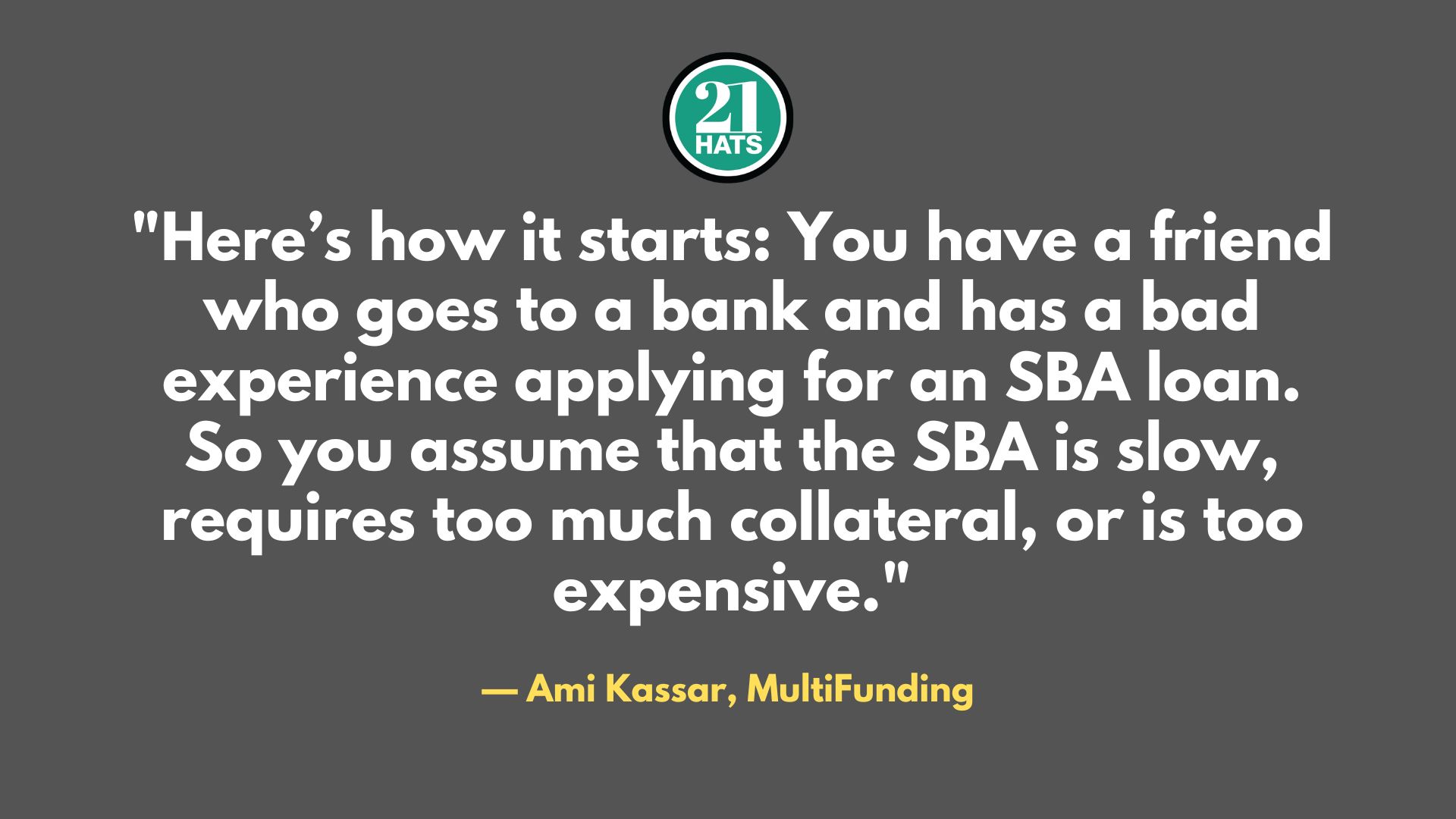The SBA Has a Branding Problem

Have you heard its programs aren’t worth the trouble? Your friend’s SBA experience might not be your experience.
By Ami Kassar
Every week, I have dozens of conversations with small business owners and entrepreneurs who have preexisting perceptions about the Small Business Administration that are simply incorrect. While I am only one small lens to the world, I can assure you, based on years and years of experience, that the SBA has a significant branding problem.
Sometimes, brands have an “association issue.” I could walk into a Ruth’s Chris restaurant in one city and have a bad meal, and I might not be willing to visit another Ruth’s Chris for a while—even though it might just have been a bad day at my first stop. Perhaps some people have used an EOS implementer and concluded that their experience is what EOS is all about. But an implementer in another city might have offered an entirely different experience that could have been much better or worse.
The SBA’s brand became better known during Covid, as many were introduced to the SBA through the Paycheck Protection Program and the Economic Injury Disaster Loan program. Those programs, however, are not a part of the SBA’s core lending offerings, which is where its branding problem originates. Here is how it starts: You have a friend who goes to a bank and has a bad experience applying for an SBA loan. So, you assume that the SBA is slow, requires too much collateral, or is too expensive. And by association, you conclude that the SBA is not for you.
But let’s think about this. First of all, you have no idea whether the bank that your friend went to has a good or experienced SBA department. The quality and experience level of SBA lenders can be all over the spectrum. Secondly, when doing a loan, it takes two to tango. Some borrowers are well organized and prepared for a loan process. And many others are behind on their financial reporting and taxes. Do you really know if your friend was well prepared to get a loan?
The variables can get even more complicated. To better explain the complexity of SBA lending, I decided to go into the SBA 7(a)-issued loans database and focus on loans issued in my county, which is Montgomery County, Pennsylvania. And I used the first nine months of fiscal year 2024 as my data set. During this time in my county, 147 SBA loans were made to 132 unique borrowers (sometimes, a borrower will get an SBA term loan and a line of credit simultaneously).
Forty-six different lenders issued those SBA 7(a) loans in my county. It’s interesting to note that 23 of these lenders have no local presence here. In these cases, the lender and the borrower did not connect in a local branch. That means that borrowers can enter the 7(a) program through many different doors and thus have very different experiences even though they are all seeking a loan from the same program.
SBA loans in my county also come in various shapes and sizes. The smallest loan was for $10,000, and the largest was for $5 million, with the median loan being $175,000. Loans have different durations, too. The shortest duration was 10 months, and the longest was 306 months, backed by real estate. My county’s median duration for an SBA loan was 120 months or 10 years.
In my county, SBA 7(a) borrowers came from 80 different NAICS codes—the most popular being landscapers, childcare centers, and residential remodelers. Fifteen of the SBA loans in my county—or just over 10 percent of the total loans issued—were used to open franchises. Finally, 63 of the loans, or 43 percent, were lines of credit.
What’s my point? Your friend’s SBA experience may not be a good indicator of your potential experience. Please set aside your assumptions and take the initiative to explore whether the program could work for you. Your situation might be a perfect fit for the SBA program.
Ami Kassar is CEO of MultiFunding.